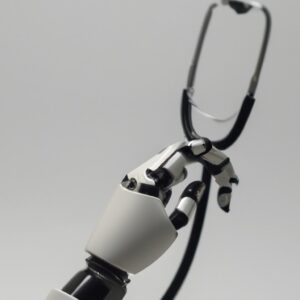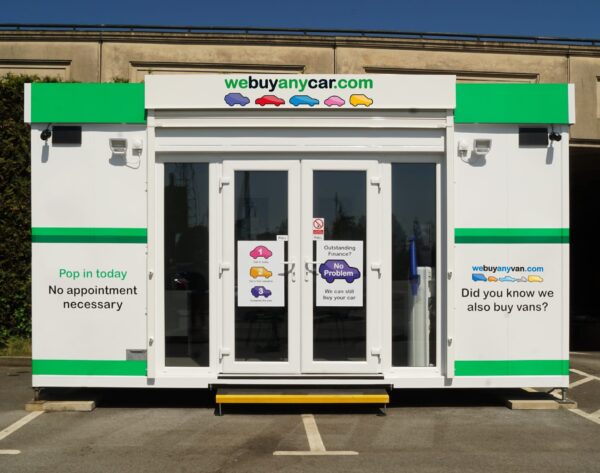Healthcare and Everyday Life Get a Robotics Upgrade

Introduction to the Role of Robotics in Healthcare and Everyday Life
Robotics technology is revolutionizing the way healthcare is administered and impacting our daily lives more and more each day. From administering medication in hospitals to providing assistance with everyday tasks at home, robots have the potential to make life easier and save lives. In this guide, we’ll look at the history of robotics, discuss how they are used in healthcare, examine their ever-growing role in everyday life, and explore the benefits and concerns associated with this revolutionary technology.
History of Robotics
Robots have been around for centuries, first appearing as mechanical simulacra in ancient Greek texts. In the early 1900s, after the invention of computers, robotic technology began to gain traction. In 1961, the world was introduced to the first industrial robot, Unimate. This robot was designed for automotive production and could move heavy parts back and forth between assembly lines. In the years since, robotics technology has advanced drastically and now offers a wide array of applications ranging from healthcare to entertainment.
Healthcare Uses
Robots are becoming increasingly popular in the healthcare industry due to their accuracy and time-saving capabilities. From administrative tasks like scheduling appointments to providing medical care like administering medications, robots can aid healthcare workers in providing quality services to patients. Robots are also used for complex surgical procedures that require high levels of precision and dexterity such as minimally invasive surgeries.
Everyday Applications
Robots have begun to play a big role in our everyday lives. For example, retail stores, restaurants, supermarkets, and airports are all now using robots to help with basic tasks such as cleaning or replenishing shelves. Robotic vacuum cleaners have become commonplace in households to help alleviate the burden of daily chores. Service robots are also being used in homes to assist elderly citizens with everyday activities.
The History of Robotics
Robotics has been utilized in various applications since the early part of the 20th century. In 1898, Nikola Tesla developed a remote-controlled boat with the intent of utilizing it for warfare purposes. By the 1950s, robotic inventions saw widespread use in manufacturing. Early robot designs were primitive by today’s standards, but they were an invaluable resource for repetitive and dangerous tasks.
It wasn’t until the late 1970s and 1980s that robotics became more commonplace. Robots played a significant role in the auto industry as robotic arms became responsible for spraying, welding, and assembly. In addition, advancements in artificial intelligence led to robots becoming smarter and capable of more complex tasks.
Today, robots are used in countless applications. Robotics is present in many industries including manufacturing, healthcare, hospitality, and more. From automated vacuums to medical robots, the integration of robotics into everyday life is only increasing.
Robotics in Healthcare
Robots have become increasingly important in healthcare, with applications spanning from administering medication to performing delicate surgeries. For doctors and nurses, these automated assistants are a useful tool that can help streamline a variety of tasks. Robots can be used to transport essential supplies, carry out laboratory tests, and even remotely provide medical consultations.
Robotic arms and grippers can also assist in surgical operations. Manned by surgeons, these machines are incredibly precise, eliminating the risk of human error. Additionally they have the potential to speed up procedures, reducing the time a patient needs to be anesthetized or operate on.
Robotics are also helping to improve the accuracy of diagnostics. AI-powered software can detect cancerous cells and identify dangerous areas more quickly than the human eye. Robot-assisted machines can also be used to deliver doses of radiotherapy to precisely target tumor sites.
In addition to these medical uses, robots can be helpful in improving the overall healthcare experience. Automated receptionists and check-in kiosks can reduce wait times for patients, and provide greater privacy. Additionally, hospital robots can be tasked with cleaning operating rooms, preparing meals, and delivering supplies.
Everyday Applications of Robotics
Robotics and technology are becoming more integrated into everyday life. From our homes to retail stores, robots are making it easier to get the job done. In homes, robots are employed to vacuum floors, clean pools, mow lawns, and perform other maintenance tasks. In restaurants and retail stores, robots are being used to help prepare meals, operate cash registers, and tidy shelves.
In addition, technology is being implemented in cars, buses, and even airplanes to help improve safety. Systems such as lane assist, adaptive cruise control, and automatic emergency breaking employ technologies like sensors and algorithms to make driving and flying much safer.
Robots and technology are also being used to automate mundane tasks in order to increase efficiency. For example, research laboratories are using robotics to perform experiments autonomously without human interaction. This reduces the time needed to perform tests and decreases the chances of human error.
Overall, robots and technology are slowly being integrated into our everyday lives. From simple household tasks to complex research projects, robots are playing an increasingly important role in improving the quality of life for individuals around the world.
Human/Robot Interaction
Robots are becoming more and more popular in our everyday lives. They can be programmed to do tasks that humans cannot, such as repetitive, low-level tasks or jobs that are too dangerous for a human to attempt. As such, robots are becoming increasingly prevalent in healthcare, retail stores, restaurants, and the home. But how is this changing the way humans interact with machines?
There are both advantages and disadvantages to introducing robots into our lives. It can improve efficiency, accuracy, and safety, leading to better patient care and higher quality products and services. Autonomous robots can also relieve monotony and help reduce human impact on the environment by reducing waste associated with production. On the other hand, robots can cause job insecurity for people who are replaced by machines, and they can lead to reduced interaction between humans. Furthermore, as robot technology continues to evolve, it is essential to consider the potential security risks posed by these increasingly advanced devices.
It is also important to look at how robotics can affect relationships between humans and machines. Robotics can make complicated tasks easier for humans to manage and help us complete tasks more quickly than ever before. Additionally, robots can help to bridge the gap between people of different backgrounds by providing a common medium of communication, such as translations or other language services. Finally, robots can provide physical therapy or assistance to those in need, allowing them to maintain a higher level of independence.
The role of robotics in our lives is becoming increasingly important, and it is essential to understand both the positives and negatives of this technology. It is clear that robotics has the potential to improve healthcare, everyday life, and human/robot interaction, although it is vital to take into account any potential risks.
Robotics technology has become an integral part of our everyday lives and is playing an increasingly important role in the healthcare industry. From administering medication to performing medical procedures, robots are revolutionising the way healthcare is delivered. In addition to its use in healthcare, robotics is also being used in a variety of other everyday settings such as at home, in retail stores, and in restaurants. In this guide, we will discuss the role of robotics in healthcare and everyday life, and explore the benefits and concerns that come with using robots in various contexts.
Introduction
Robotics is the science and engineering of developing machines that can substitute for humans in performing tasks, including those that require manual dexterity, strength, and knowledge. In the past few decades, advancements in robotics technology have exploded and robots are now being used in a variety of industries from healthcare and transportation to agriculture and manufacturing.
History
Robots have been around for centuries, with some of the earliest inventions being designed for entertainment or decorative purposes. The world’s first true robot was created in the 1920s by Czech writer Karel Čapek and was used for industrial automation. Since then, robots have continued to evolve with increased accuracy, speed, and control. Today, modern robots are used in a variety of industries, including healthcare, retail, and restaurants.
Healthcare Uses
Robots are now being used more and more in the healthcare industry, from administering medication to performing surgeries. Robots are able to perform these jobs with greater accuracy, speed, and precision than human workers. Robots can also help minimize the risk of hospital-acquired infections by decreasing the number of interactions between healthcare workers and patients.
Everyday Applications
Robots and robotic technologies are being used in a variety of everyday settings, such as in homes, retail stores, and restaurants. For example, robotic vacuums have become popular in homes, while robots are being used to stock shelves and take orders in retail stores. Additionally, robots are even being used for food delivery in some restaurants.
Human/Robot Interaction
The use of robots in various industries and scenarios is changing the way humans interact with machines. As robots are becoming increasingly integrated into everyday life, humans are beginning to interact with them on a daily basis. This interaction can be both positive and negative, as robots should be designed with safety and human-centered design in mind.
Benefits
Robotics offers a number of benefits to its users, including improved efficiency, safety, and accuracy. Robotics allows for automation of tasks which can save time and money. Additionally, robots can work in hazardous or difficult environments, and can operate without rest or fatigue. Robots can also provide greater accuracy than human workers in certain tasks due to their ability to follow precise instructions.
Concerns
While robotics offer many advantages to society, there are also potential risks and concerns that come with the use of robots. These include safety issues such as malfunctioning robots, cost concerns related to the development and maintenance of robots, and ethical dilemmas regarding job displacement. Additionally, there is the potential for robots to develop too much autonomy, which could lead to dangerous outcomes if not properly monitored.
Future Considerations
As robotics technology continues to evolve, there are a variety of potential future applications for robotics. One potential application of robotics technology is autonomous vehicles, which could be used for transportation or deliveries. Additionally, robots could become increasingly integrated with AI, allowing them to make decisions and process information independently.
Summary
In summary, robotics technology is rapidly evolving and being used in a variety of industries and settings. Its applications range from administering medication in healthcare settings to taking orders in retail stores. Robotics brings a number of benefits to society, such as improved efficiency, safety, and accuracy. However, there are also potential concerns that come with using robots, including safety issues, cost concerns, and ethical dilemmas. As robotics technology continues to develop, it will be exciting to see the new and innovative ways robots are used in the future.
When talking about robotics, it is important to consider potential concerns and risks that come with using them in various industries and scenarios. Robotics can be incredibly effective and useful, but we must also recognize the potential dangers they may bring.
On the plus side, robotics can help with medical procedures by eliminating human error and improving accuracy and speed. They can also provide safety benefits in hazardous environments, such as construction or industrial sites. However, there are also risks associated with robotics. For instance, since robots are programmed with a specific set of instructions, they may not be able to respond to unexpected situations. Additionally, if robots become too powerful, they could potentially put humans at risk or take away jobs.
We must also keep in mind the potential privacy implications of using robotics. As companies continue to create more sophisticated robots, it is important to ensure that these machines cannot access sensitive data without proper authorization. This means that companies must set up rigorous security measures to prevent robotics from accessing private or confidential information.
On top of privacy issues, we must also think about how robots can affect our personal lives. For example, several studies have suggested that increased use of robots can lead to an increase in loneliness and isolation in humans. It is important to consider how robotics can both help and harm us, and whether or not we should limit their use in certain areas.
Overall, it is important to remember that while robots can offer many advantages, we should carefully consider the potential risks and concerns before deploying them in various industries and scenarios. By understanding the possible dangers of robotics, we can ensure that they are being used safely and responsibly.
Future Considerations
As robotics technology advances over the next few years, it is expected to revolutionize various sectors, including healthcare and everyday life. Advances in artificial intelligence, sensors, machine learning, and other technologies are all contributing to a fast-paced evolution of robotic capabilities. For example, robots may be able to take on more complex tasks in healthcare, including diagnoses and surgery. In everyday life, robots could be used to automate mundane tasks or even provide companionship.
Furthermore, developments in 5G networks are paving the way for robots to be connected in real time and with more accuracy. By connecting numerous devices to form a ‘mesh network’, it’s possible to create an autonomous workforce controlled by a central hub. This could make it easier to deliver goods, monitor people’s health, and even aid in disaster relief efforts.
Robotics in the home will become increasingly common in the future, with robots performing tasks like vacuuming, mowing the lawn, folding laundry, and so much more. Even further, companion robots could help improve mental health issues by providing a listening ear or support for activities such as exercise.
Overall, it’s clear that robotics in healthcare and everyday life will continue to evolve in the coming years. This guide has provided an overview of the current state of robotics and explored the potential benefits and risks associated with its use. As humans become more comfortable with robot interactions, we can expect to see even more exciting developments in this field.
Robotics technology has made an incredible impact on healthcare and everyday life, from medical breakthroughs to more efficient operations. Robotics has been around since the early 20th century, although initially used in industrial settings. Today, robots are playing a larger role than ever before, ranging from administering medication to helping keep homes tidy. As we continue to advance our understanding of robotics and improve our capabilities with artificial intelligence, robots have become increasingly integrated into our lives.
Robots provide numerous benefits, such as increased accuracy, safety, and efficiency. However, like with any technology, there are valid concerns and risks that must be weighed. Moving forward, it is important to consider the implications of robotics in various industries and scenarios.
In conclusion, it is clear that robotics is having a major impact on healthcare and everyday life. From providing medical care to making mundane tasks easier, robotics technology has come a long way in the last century. Although there are potential risks and concerns associated with robots, there is also plenty of hope for the many positive applications of robotics, now and in the future.
Robotics is a rapidly growing field with an array of applications. From healthcare to everyday life, robots are becoming more and more integrated into our society. For those looking to learn more about robotics and its role in our lives, there are many resources available.
The World Robotics Organization (WRO) is a great place to start. WRO provides educational materials and resources dedicated to robotics and its applications. This includes information on robot development and use, as well as the ethical implications of using robotics in healthcare and other industries.
International Symposium on Robotics is another organization whose mission is to promote robotics research and its applications. They hold conferences and workshops that target robotics experts, students, and entrepreneurs. These events also provide networking opportunities and a platform for exchanging ideas and experiences.
Robotics Industry Association (RIA) is a US-based nonprofit organization serving the global robotics industry. They keep their members informed about the latest developments in robotics with news updates, workshops, forums, and publications.
IEEE Robotics & Automation Society is a professional association committed to advancing the field of robotics. They support the development, implementation, and proliferation of robotics technology and applications around the world.
Lastly, the International Federation of Robotics (IFR) provides accurate statistical data on robotics industry growth across the world. Their website hosts reports, forecasts, videos, and graphs related to the topic.
These resources provide a wealth of information about robotics and its various uses in healthcare and everyday life. Whether you’re looking to stay up to date on the industry’s progress or doing research for a project, they are invaluable resources worth exploring.
Robots are transforming the way we live our lives. The medical field, home life, and other industries all use robotics to make their tasks easier, more efficient, and even safer. In this guide, we’ll explore the role of robots in healthcare and everyday life, from their history to their current applications and the debates surrounding their use. We’ll cover the benefits they offer, concerns that have been raised, and what the future might hold. But first, let’s start with some of the target search terms for this guide.
Robotics, artificial intelligence, healthcare, automation, robots, machine learning, automation, technological advances, and everyday life are all keywords relevant to robotic technology. These topics will be explored in detail throughout the guide.
Images play an important role in connecting readers with the concept of robotics and enhancing the overall experience of reading an article. In this guide, it is imperative to include an image that reinforces the overall message of the post and catches the reader’s eye. While there is no hard and fast rule for the type or style of image to use, it should be relevant to robotics and the content discussed in the article. The image could be a still or animation of a robot, a photo of a robotic system being used, or a visual representation of the concept of robotics. Whatever it may be, make sure to pick a high-quality image that will grab the reader’s attention and help them stay engaged with the content.
comments: 0






